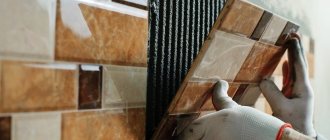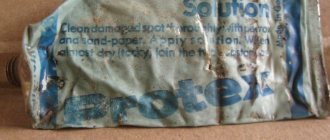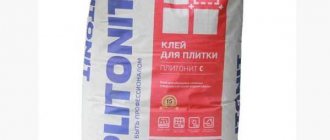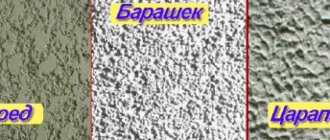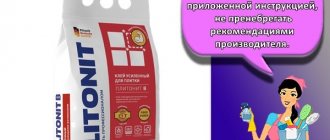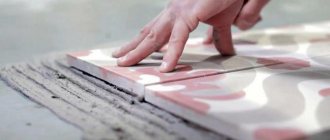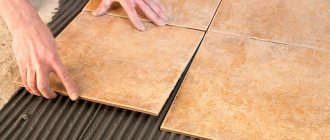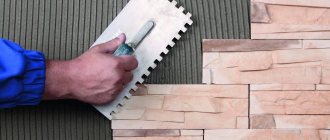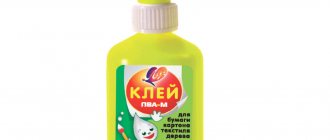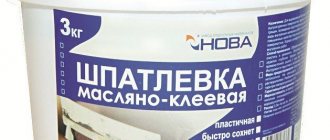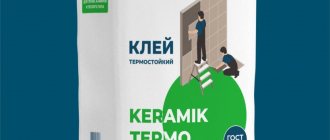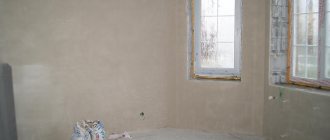In everyday life, there is always a need to work with wooden parts or finished wood products. Nails and self-tapping screws do not always save you in these situations, but PVA furniture glue is just that universal and effective tool that will reliably hold surfaces together. But there are a lot of adhesive compositions on sale and their purposes are different, so when choosing a product for wood, you should know at least basic information about it.
One- and two-component PVA adhesives
Speaking about which PVA glue is best for wood, it is worth noting that there are two types of these compositions - one-component and two-component. The first option is universal and suitable for working with wood indoors. The second type requires the additional presence of a hardener in the composition, has a high level of moisture resistance and is recommended for use outdoors.
Any composition, for example, PVA glue Moment Joiner, in case of rare use, tends to delaminate. In addition, over time, sediment forms in the mass. Therefore, the mixture must be shaken thoroughly before each use.
Using glue in combination with finishing compounds is a dangerous business. Traces of dried sticky mass appear under a layer of varnish or stain.
The open time for both types of glue is the same. And it is equal to 3-5 minutes.
Where are they used?
Adhesive compounds based on polyvinyl acetate are used for carpentry work.
Their main areas of use:
- production and repair of various furniture;
- interior decoration (usually the floor surface).
One of the questions people often ask is: is it possible to add PVA glue to whitewash for trees? The answer is clear - yes, you can! Joiner's compound is perfect for this purpose. It will improve the protective characteristics of the whitewash mixture, making it resistant to different temperature conditions and precipitation.
Advantages of joinery PVA
PVA carpentry glue has gained well-deserved popularity due to its impressive list of advantages.
Several important reviews can be highlighted:
- quite economical consumption;
- the most elastic seam, not subject to temperature changes and bending;
- ability to work at high air humidity;
- environmental friendliness of the material due to the absence of toxins.
Based on this, it is one of the most popular for working with furniture and wood, among all types in general.
Disadvantages of carpentry PVA
Like any product, PVA carpentry, along with its positive aspects, also has negative aspects. This product has only one significant drawback, which is poor moisture resistance. This only applies to glue in its pure form. Since it contains liquid, when the dried mass is exposed to water, it may begin to separate.
But PVA manufacturers have long found a way out of the situation and began to add additional components to their products that increase the composition’s resistance to moisture. So, now on store shelves you can find adhesives with the inscriptions on the packaging “D2”, “D3” or “D4” - these are the ones you should focus on when buying adhesive mass.
The best polyurethane compounds for gluing wood
Polyurethane wood adhesives are characterized by high strength. The products connected by them are able to withstand significant static and dynamic loads. The seams of glued parts do not react to high humidity and can easily withstand exposure to ultraviolet rays and sudden temperature changes. The review presents the best products in the line of polyurethane adhesives.
SOUDAL 66A
Product of the Belgian company Soudal NV. Belongs to wood adhesives of moisture resistance class D4. The bonding strength of the parts being glued is extremely high. It is used to glue furniture, railings, stairs, wooden windows and doors that are used in rooms with high humidity or exposed to precipitation.
SOUDAL 66A
Advantages:
- super waterproof;
- lasting;
- glues any types of wood, including wet ones;
- firmly connects wood to any building material.
Flaws:
- tends to greatly increase in volume;
- expensive.
Experts ranked it third in the ranking of polyurethane adhesives.
Kleiberit 501.0
Polyurethane composition produced by the already well-known German company Klebchemie MG Becker Gmbh. The water resistance class is the same as Soudal 66A – D4. Versatile. It is most often used when gluing parts of a large area. Hardens when exposed to water. After application to the surfaces to be bonded, it is necessary to spray at least one of them with water using a spray bottle. The parts are then pressed tightly, fixed, and the curing process begins. After half an hour, a joint is obtained that is stronger than cyacrine gluing. If it gets on skin or clothing, wash it off immediately with acetone or Kleiberit 820 branded cleaner.
Kleiberit 501.0
Advantages:
- forms high-strength connections;
- super waterproof;
- universal;
Flaws:
- Strong smell;
- need to protect hands.
Taking into account the shortcomings, the product takes second place in the rating.
Titebond Polyurethane Wood Glue 2300
Experts consider it the best in the line of polyurethane wood adhesives. The American company managed to create a product with an optimal ratio of setting speed (20 minutes) and hardening speed (45 minutes). Versatile. In addition to natural wood and particle boards, it firmly connects products made of metal, ceramics, and stone. It can be sanded and painted. Water resistance class D3. This is a high indicator, but placing the seam in water is not recommended. The composition is environmentally friendly and can be easily washed off your hands.
Titebond Polyurethane Wood Glue 2300
Advantages:
- high strength;
- moisture resistant;
- eco-friendly.
Flaws:
- Suitable for operation at air temperatures below +100 C.
| Types of wood glue | place | Name | Country of Origin | Packaging | Average price rub. |
| Polyurethane | 1 | Titebond Polyurethane Wood Glue 2300 | Belgium | 236ml | 195 |
| 2 | Kleiberit 501.0 | Germany | 0.5 kg | 397 | |
| 3 | SOUDAL 66A | USA | 250 ml | 400 |
ULTIMA JOINER PVA
The unique PVA adhesive Stolyar from Ultima has fairly high performance properties. It is actively used in the printing and woodworking industries.
The glue is famous for its maximum seam strength, due to which it can successfully glue parts that in the future will be subject to high loads - this mark is even on the packaging of the composition. In addition, among the positive aspects, it is necessary to highlight the setting speed, frost resistance and almost crystal transparency.
The adhesive mass does not lose its properties after four cycles of freezing to -35 degrees. This fact is indicated by the manufacturer and confirmed by many buyers, so it is really worth trusting it.
The only downside of the glue is that it takes a long time to dry. Despite the rapid setting after distributing the mixture and joining the parts, the master will in any case have to wait several hours to continue working with the glued elements.
PVA and dry construction mixtures
In fact, dry mortars became widely possible because the PVA dispersion was dried and made available in powder form.
Any building mixture consists of:
- filler, which is most often quartz sand, but it can also be chalk, expanded clay, etc.;
- binder, which is cement, lime, gypsum;
- chemical additives, which are often based on PVAD-based dispersion powder.
Of course, in addition to this powder, there are other chemical additives, but their composition and quantity in different mixtures is different. We mention this in general so that a thrifty owner can, in some cases, save money by understanding the essence.
Namely. All chemicals in building mixtures account for from 2 to 5%, everything else is filler and binder. When buying a cement building mixture, you often buy cement and sand at an expensive price. And drying the PVA dispersion adds a fair amount of cost, so that you end up diluting it with water and getting the same PVA. And for the rest of the chemicals, for most not very special mixtures, some liquid soap or even washing powder in an amount of 2 - 3% of the amount of binder is quite suitable. At worst, even shavings from laundry soap will do.
Krass PVA PVA D3
PVA class D3 wood glue is an excellent choice for joining parts whose appearance should never be spoiled. It can be used when working with an expanded list of wood species. As a rule, this product is used for the manufacture of kitchen or garden furniture, as well as the installation of laminate and parquet. It is no less in demand when it is necessary to work with windows, timber, doors, veneer and plywood.
The glue differs from its competitors in its high level of water resistance and transparency after drying on the surface. Also, the features of the composition include an elastic, but very durable seam, which is slightly subject to physical changes.
This glue, despite the warnings of some experts, can be applied to the damp surface of wood and thus connect parts. An equally important advantage of the product is the absence of toxins and organic solvents, which ensures its environmental safety.
The disadvantage of this adhesive mass is the same as that of the previous product - the drying time. Otherwise, Krass PVA PVA D3 receives only positive reviews and suits buyers even with its price.
Comments
- Yuri:
07/31/2016 at 12:35Bravo! I 100% support your point of view on fashionable mixtures.
Moreover, for more than 40 years I have been using a mixture of creamy cement mortar (without sand) and good (imported) PVA, about 1 tbsp. spoon per liter of solution (more or less is determined experimentally depending on the purpose of the solution). As an example from my own experience, I can say the following: 1. The tile is firmly glued to any surface. I glued 10 mm plywood to a sheet to cover the pipes in the toilet, so after drying, when I tried to straighten the slightly bent sheet (it was necessary to bend it slightly in the opposite position at the beginning), several tiles simply burst in the center of the sheet, but none of them came off and were holding on dead. for about 40 years now. The only peculiarity is that before gluing, the tile must be moistened with a 10% solution of the same PVA so that the solution adheres to the base of the tile, and not just to the chalk layer, which is what usually causes the tile to peel off from the surface. This solution is also irreplaceable when gluing tiles to walls covered with oil paint and when repairing peeling tiles. 2. As a wood putty, it can be used to initially seal cracks or flaws in furniture and wooden structures of any depth with virtually no shrinkage. 3. Also used when connecting cast iron plumbing pipes instead of chasing. The result is such a dead connection that it eliminates the possibility of further disassembly if necessary! At least I just had to break one of the connected pipes
That is, it turns out cheap and cheerful and without any bells and whistles and fashionable mixtures!
- Ivanov Vadim Olegovich:
04.12.2016 at 13:49
What does the word pva mean?
- admin:
12/05/2016 at 07:03
PVA is polyvinyl acetate
- Vladimir:
01/10/2017 at 12:11
Hello! Please tell me which PVA can be used to repair hunting skis (cracks and peeling)? Thank you.
- Nikolaevich:
01/12/2017 at 13:36
You can use any of the PVA glues, except for purely office glue, which has too low a concentration. We recommend taking either dispersed (it says so on it) or construction - they are more expensive, but also of higher concentration. In your case, an important role will be played not so much by the adhesive composition, but by good pressure on the peeled layer after applying the glue. To do this, you can pour a small amount of sand into a durable plastic bag, put it on the glued layer and tighten the ski with clamps through the board(s). After drying, the polyethylene will easily come off from the exposed glue. The excess can be removed using sandpaper and the surface can be varnished. If there are deep chips, then repair them using the method described in the article, preparing the so-called. "liquid tree" It is important to take your time here and let the glue fully polymerize.
- Marat:
01/26/2017 at 15:09
After repairing the tiles, there is some PVA construction glue left, can it be used for gluing wood?
- Nikolaevich:
01/27/2017 at 00:40
Of course you can
- Spiridon:
03/23/2017 at 18:09
You can make your own high-quality wood putty from PVA glue. To do this, you need to mix the glue with small sawdust to the consistency of thick sour cream. This putty can be used on any wooden surfaces. It has excellent adhesion, does not shrink when dried, and adheres firmly to the surface. This putty interacts well with various varnishes and paints and is a universal tool for home craftsmen.
- Alexei:
07/26/2017 at 10:07
Hello everyone. I have a question for specialists and simply knowledgeable people. When building a private house, I used OSB boards for exterior finishing. So the question is this: because. The façade paint does not stick to OSB, I decided to cover the OSB with fiberglass (gossamer) using PVA. How correct is my idea? Can PVA be used for outdoor work? Is it possible to paint walls over PVA and if so, then with what?
- Eugene:
08/31/2017 at 14:02
Good afternoon. We are engaged in the production of gypsum artificial decorative stone (tiles). I saw information in the article about the possibility of using PVA. PLEASE give more specific recommendations for use.
- Lyudmila:
08/17/2018 at 17:00
Hello! I really liked your article! I'm not an expert, but I like to do a lot of things on my own. And of course savings!!! But I'm a little confused. Can you help me? I have four jobs to do: 1) gluing a fabric-based film onto a putty wall, 2) installing a ceiling foam plinth (PVA is needed to add to the finishing putty), 3) gluing the ceiling with decorative crumpled paper, such as thin parchment, ON an already glued ceiling tile ! And 4) try to do “acrylic pouring”, this is something like modern abstract painting. Can also make an economical primer. My question is this: which PVA glue do I need, or do I still need several, such as household/wallpaper PVA, PVA-MB...? Please can you answer my email?
Furniture PVA Kleiberit 303.0
It is not difficult to find a composition with the best technical characteristics and resistance to liquids, because Kleiberit PVA glue is sold in every specialized store. It has long occupied an honorable place in the ranking, and the quality of the product has been tested by time and by experienced craftsmen who praise this brand in everything.
The glue has universal properties. It allows you to combine different types of wood, as well as finished wood chip products and veneer. The main highlight of the composition is the ability to reliably bond hard and exotic wood.
It is important that after applying the mass to the surfaces to be joined, the parts are firmly pressed together for 10 minutes at a temperature of more than 10 degrees Celsius. And when the glue dries and the wooden elements become almost impossible to separate, the composition will acquire a whitish color, and its frost resistance level will reach 30 degrees below zero.
Adhesive compositions based on organic resins
Epoxy adhesive is widely used in industry, construction and everyday life, due to a number of useful properties:
- high adhesion to various materials;
- good physical and mechanical properties;
- slight shrinkage during hardening;
- resistance to chemical influences;
- non-conductivity (dielectric).
Epoxy compounds are popular both in production and among those who like to tinker at home. Despite the saturation of the market with many modern compounds with an excellent set of qualities, epoxy remains in demand. As soon as the need arises to connect parts of dissimilar solid materials, home craftsmen remember this powerful tool. The rating presents three products of domestic and foreign manufacture.
EDP EPOXY
A popular domestic composition consisting of resin and hardener. Sold as a set and separately. Mixing them gives impetus to the polymerization process, forming a very strong compound. The composition replaces traditional mechanical methods of fastening parts made of any material due to its high adhesion.
EDP EPOXY
Advantages:
- the seam is waterproof;
- does not collapse as a result of chemical influences;
- easily tolerates sudden changes in temperature;
- frost-resistant;
- universal;
- practically does not shrink.
Flaws:
- long hardening time;
- the need to maintain precise proportions of mixing components.
Experts ranked this glue third in the ranking.
Attention! Epoxy adhesive is not recommended for use in the repair and manufacture of parts intended for cutting and storing food products.
TITEBOND ORIGINAL WOOD GLUE
Carpentry and furniture professionals never tire of praising this product of an American company. It is valued for its strong adhesion and speed of hardening. The seam is stronger than wood, sanded and painted. The composition ideally glues wood and chipboard, leather, fabrics and other porous materials. Non-toxic, easily washed off with water.
TITEBOND ORIGINAL WOOD GLUE
Advantages:
- strength;
- versatility;
- strong grip;
- short holding time in clamps;
- cutting tools do not deteriorate when processing seams.
Flaws:
- low moisture resistance (class D 2);
- high consumption.
It is given second place in the ranking of adhesive compositions based on organic resins.
UHU PLUS ENDFEST 300
This development of German chemists has become the strongest glue for wood, based on epoxy resin. Among two-component compositions, only it can withstand a load of 300 kg/cm2. The versatile product bonds everything from wood, rubber and plastic to concrete, stone and porcelain. Pronounced dielectric. The components are mixed in equal parts. Packaged in tubes of 165 and 25 g. (the latter is included with a syringe). The seams are moisture resistant and durable.
UHU PLUS ENDFEST 300
Advantages:
- super durable;
- moisture resistant;
- has high adhesion;
- universal, sticks everything to everything;
- does not conduct electric current.
Flaws:
- very expensive.
According to experts, it is the best adhesive in this rating.
| Types of wood glue | Place | Name | Country of Origin | Packaging | Average price rub. |
| Adhesive compositions based on organic resins | 1 | UHU Plus Endfest 300 | Germany | 163g | 1655 |
| 2 | TITEBOND Original Wood Glue | USA | 473g | 3480 | |
| 3 | EAF Epoxy | Russia | 150g | 86 |
Work technology
Along with information about the best quality products, it is also worth knowing how to glue wood with PVA glue.
Regardless of the variety, the manufacturer of the sticky mass should follow two important rules:
- Before working with glue, wooden parts must be assembled in test mode to ensure that all elements are present and correspond to each other.
- Before distributing the composition over the surface, it should be cleaned and dried.
There are situations when parts cannot be pressed together with the required pressure. In this case, they should be connected and fixed with clamps, and the wooden elements should be removed only after the adhesive mass has completely dried.
Types of wood glue
Wood glues, which had to be prepared with your own hands at home, are a thing of the past. The construction market offers a wide range of ready-made compositions.
The most popular are:
- PVA is a composition based on polyvinyl acetate emulsion. Universal, imported and domestic production. Used as construction, office, carpentry. Demonstrates good compatibility with finishing compounds. Dries quickly. Non-toxic, inexpensive, available to a wide range of buyers. Adhesive seams can withstand static loads.
- Polyurethane. Highly durable. It is used to assemble load-bearing wooden structures, yachts, boats, poorly fitted elements of windows, doors, and furniture parts.
- Based on organic resins. Popular among home craftsmen. Suitable for interior and exterior work.
- Synthetic. Versatile. Its characteristics are superior to household products for gluing wood.
After getting acquainted with the types of wood glues, it’s time to move on to a review of the best compositions, according to consumer reviews. The place in the ranking is assigned separately according to the four listed groups. Each of them examines the three most popular samples.
Valuable advice
When purchasing PVA glue for wood, it is worth considering important nuances in order to spend money on a truly effective gluing component.
The following points are worthy of attention:
- to permanently connect parts, it is better to choose a synthetic adhesive composition, but for elements that will be disassembled in the future, it is worth purchasing casein or bone glue;
- light wood is demanding on adhesives and for it it is necessary to select a product that can adapt to the color of the surface so that after drying there is no very visible dark seam between the parts;
- the adhesive mass should not be too thick or liquid, as this may indicate its overcooling and, as a result, loss of properties.
Craftsmen often ask the question: how long does it take PVA glue to dry on wood? This is really important to know, because otherwise the result of connecting the parts may be disappointing. The packages of adhesive mixtures indicate different drying times, but you should not believe this in all cases.
Experts recommend not touching the glued elements for 24 hours.
This period will definitely be enough for the composition to fully set and the parts will not separate either on their own or under force.
Tips for working with glue
To get a truly high-quality connection of parts, you should follow the following recommendations:
- Stir the glue well before use;
- work with the composition at temperatures from +10 degrees, humidity up to 80%;
- always apply the product to clean substrates;
- ensure surface dryness;
- lubricate one part with glue; an excessively thick layer will only reduce the adhesion of the composition;
- maintain the thickness of the adhesive film to 2 mm;
- do not touch the product until completely dry.
Despite its low cost, PVA has excellent performance characteristics, so it does not lose popularity in everyday life and on construction sites. The environmental friendliness and effectiveness of the product allows it to be on the list of leaders, which is also facilitated by the availability of glue for any user.
Reviews of different carpentry PVA
Buyers often leave their comments after using one or another PVA glue for wood. Their opinion helps beginners understand which product is worth taking and which one is better not to look at.
Joiner's Professional glue from Tex receives a lot of feedback. Consumers like its versatility, increased strength, and environmental friendliness. But speaking of the negative aspects, people highlight only the considerable consumption of material.
Also, craftsmen often comment on the composition of Titebond III Ulimate 1416 and its predecessor - Titebond II Premium produced by Franklin International. Consumers consider their strengths to be water resistance, environmental friendliness and quick setting. People were not able to find any shortcomings in these products, since they were satisfied with both the quality and the cost.
EDP Epoxy glue is also a good find for craftsmen. It contains a resin that provides accelerated curing, which is why consumers love this product. As a rule, they speak about it positively, pointing out its resistance to water, reasonable price, and lack of shrinkage.
But, remembering the disadvantages, people periodically complain about the inconvenience of using the composition, as well as its long drying time, although the majority of buyers consider these points to be just nit-picking, and therefore do not stop purchasing glue for various purposes. Working with two-component epoxy on wood requires skill.
PVA glue: decoding and composition
PVA glue is a product of the chemical industry with excellent adhesive properties. The decoding of the abbreviation is simple: the letters indicate the active substance - polyvinyl acetate, it contains about 95%. The remaining adhesive formula looks different depending on the specific type of product. May contain:
- DOS (stands for dioctyl sebacate);
- dibutyl phthalate;
- other plasticizers;
- tricresyl phosphate;
- acetone;
- esters;
- stabilizing additives;
- preservatives;
- water.
Some people try to make PVA with their own hands, using recipes based on flour and starch. In fact, these substances have nothing to do with the real glue base. Polyvinyl acetate is produced by polymerizing vinyl acetate monomer. The finished substance cannot be dissolved in water - it only swells, and behaves similarly in oil solutions. PVA is resistant to temperature changes, inert to air, non-toxic, and not harmful to humans.
According to GOST, polyvinyl acetate-based adhesive must meet the following requirements:
- absence of a pronounced or unpleasant odor (this indicates a fake or expired glue);
- appearance - a homogeneous milky-white mixture, sometimes beige or slightly yellowish;
- the adhesive seam becomes a viscous translucent film after drying;
- the strength and elasticity of the seam are at a high level.
Depending on the user's needs, the properties of the adhesive can be changed by adding other substances to its formula. For example, some construction PVA consists not only of polyvinyl acetate and plasticizers - kaolin, talc, and chalk help thicken the solution. To increase water resistance, gasoline is added to the composition; to increase elasticity, PVA is made with the addition of oils and glycerin, but this reduces the strength characteristics. Other possible additives to the adhesive composition:
- defoamers;
- cellulose;
- metal chips;
- glass chips;
- nitro compounds;
- styrene;
- polysilicates of sodium, lithium, potassium.
Manufacturers of PVA hard adhesives in the form of pencils have to replace polyvinyl acetate with PVP (can be interpreted as polyvinylpyrrolidone) or combine the two components. This substance is thicker and has high adhesive properties.
